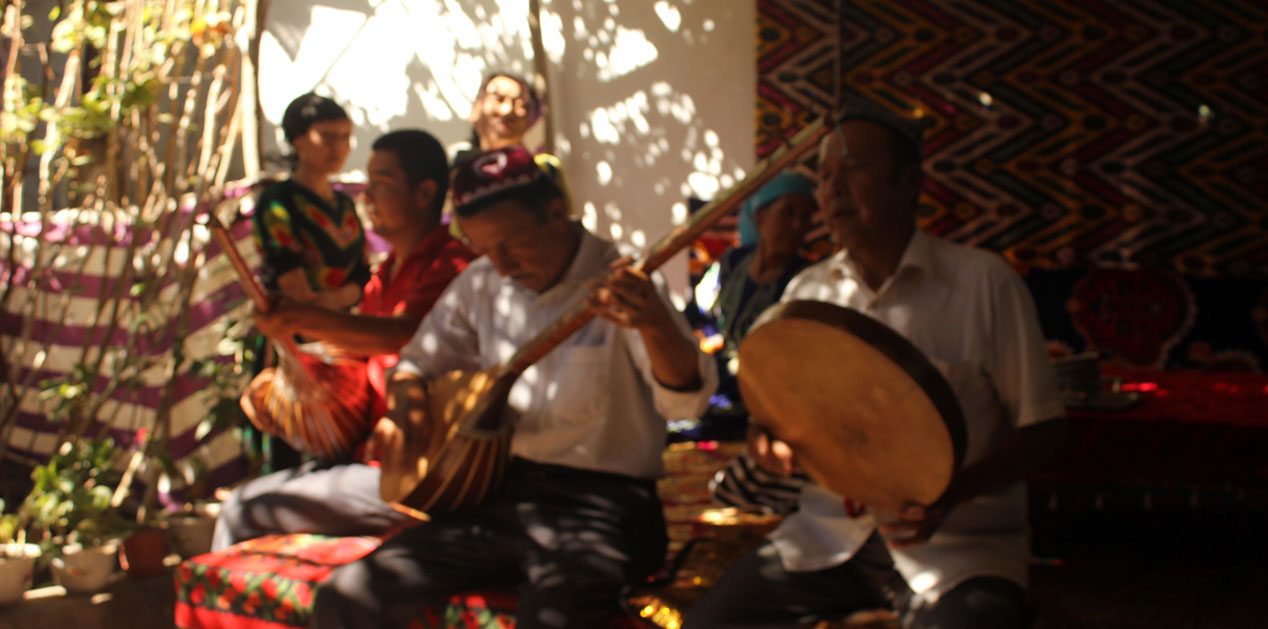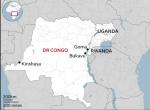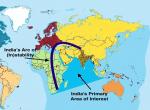The Xinjiang Uyghur Autonomous Region (XUAR) has been a sensitive region of China mainly due to the Uyghur issue and their clashes with the Central government. The article briefly delves into the history of the Uyghur’s and the reasons for their disenchantment with the Chinese government.
Who are Uyghurs?
The Uyghurs are people of Turkic origin who practice Islam. They are known on the basis of their language (Uyghur). In fact Islam is the most important symbol of their Uyghur identity. The meaning of the term Uyghur is “united” or “allied”. Historically, the Uyghur are more akin to Turks of Central Asian countries than to China. They share history of more than 4000 years with East Turkistan. East Turkistan was a part of Central Asia and not of China. It has been homeland of the Turkic speaking Uyghur and other central Asian peoples such as Kazaks, Kyrgyz, Tatars, Uzbeks and Tajiks.
The region became part of Qing dynasty only in the 18th century. 1n 1884, the Qing Court made an important decision that Province System should be established in the region and named “Xinjiang” – the meaning of which is “the old territory was regained”. After this period the Uyghurs gradually started losing their culture and identity. Under the province four prefectures were established: Zhengdi, Aksu, Kashgar and Yili-Tarbahatai. The political center was moved from Yili to Dihua (the present Urumqi). After the 1911 revolution, the Nationalist Chinese government took over and the East Turkistan came under their rule. Amid the unrest in China, the Uyghurs who were against the foreign rule tried to establish Republic of East Turkistan Republic in 1933 and 1944. In 1933 independent Republic of East Turkestan was declared in the city of Kashgar but later it came under the rule of warlords. The second time East Turkistan Republic was declared from 1944-49 with the help of Soviet backing. In 1949, People’s Republic of China was founded and the Central government decided that the regional national autonomous system should be established in Xinjiang and on the 1 October 1955, Xinjiang Uyghur Autonomous Region (XUAR) was founded. Ever since then Xinjiang entered a new phase.
The issue with the Chinese government
After the formation of XUAR not much attention was paid to assimilate the Uyghur population into the central government. In 1978 Deng Xiaoping started the economic modernization process. Consequently, given their proximity to the coastal region the eastern region of China developed faster than the western part of the country. In order to disburse the benefits of modernisation the Chinese government started the Western Development Strategy under it “Go West” initiative. Among many other policies the Chinese government encouraged large scale Han Chinese migration to the Xinjiang region. Due to this the Uyghur’s were becoming strangers in their own land. The Han population grew in the region from 6.7 per cent in 1949 to 40 per cent in 2008. The Han population in the region enjoys special rights and privileges and also enjoyed more economic benefits than the Uyghur. Soon Uyghur’s started feeling alienated and considered themselves as the worst victim of China’s westward modernization.
This was further fueled by discrimination in jobs against the Uyghur’s, endemic poverty and the central government plans to dilute Uyghur’s unique identity. They often complain that their language and traditions are not been protected enough. There were restrictions on their religious practices as well. All the government initiatives have in a way gone against the Uyghur population of the region. Thus in Xinjiang, the Uyghur discontent had been growing over a period of time. As a result they have resorted to violence.
Human rights organisation such as Human Rights Watch and Amnesty International have expressed concern over the overall deteriorating situation in Xinjiang. However, China denies any such suppression of human rights in Xinjiang.
There were 200 attacks between the year 1990 and 2001 causing 162 deaths and injury to 440 people. The 2008 Beijing Olympics was also affected by these attacks. This was the time when the Uyghur issue was widely reported worldwide. The killing of two Uyghur workers in the Guangdong province fuelled ethnic tension. In July 2009, there was an ethnic tension between the Han and Uyghur communities in Urumqi. Ever since then there has been various violent outbreaks. In May 2012, nearly 200 Uyghur gathered in Japan for a five day meeting to discuss their case. In June 2012, six Uyghur tried to hijack a plane from Hotan to Urumqi. In April 2013, outside the city of Kashgar a deadly clash broke between policemen and Uyghur. Three local government officials reported a suspicious group of individuals armed with knife. Again in March 2014, there was an attack in the Kunming. No group took the responsibility of the attack but it was found later on that the Uyghur’s were involved in the attack. These series of revolt/attack show the growing dissatisfaction of the Uyghur’s against the system.
Apart from these clashes between the Uyghur and local government there were restrictions imposed on their religious activities. In 2015 the local Xinjiang authorities have instituted a ban on Ramadan fasting for Uyghur civil servants and students and also prohibiting Uyghur’s less than 18 years of age to attend mosque.
The marginalization of the Uyghur in their own land and viewing all the Uyghur’s with same lens (separatists) has forced the Uyghur to form a platform to address all their issues. The two main groups fighting for the cause of the Uyghur are the East Turkestan Liberation Movement and the World Uyghur Congress (Germany). Dolkun Isa (German citizen of Uyghur descent) is the executive chairman of World Uyghur Congress. He stands for the cause of Uyghur citizen and their human rights. The East Tukestan Islamic Movement founded in 1990s is now renamed as the Turkistan Islamic Party. East Turkestan Islamic Movement (ETIM) is believed to be associated with the Turkestan Islamic Party, the East Turkistan Islamic Party, the East Turkestan Islamic Party of Allah and the East Turkistan National Revolution Association. The group is fighting for the establishment of an independent and Islamic “East Turkestan” state within China. There are reports that suggest that ETIM is aspiring to create a new “East Turkestan” including the territory of Turkey, Kazakhstan, Kyrgyzstan, Pakistan, Afghanistan and Xinjiang.
Some of the Uyghur’s are also being trained in Afghanistan and Pakistan. In September 2015 many Uyghur joined the Taliban and the Islamic Movement of Uzbekistan to capture the Afghan city of Kunduz. They have spread their base into Thailand and Malaysia and are also moving to Indonesia. In August 2015 they were responsible for the Erawan Shrine blast in Bangkok.
Why is the Chinese government worried?
Today Xinjiang is important for the success of the ‘One Belt One Road’ (OBOR) hence the issue of Uyghur has once again become important. The National Development Reform Commission (NDRC) in its policy document has identified Xinjiang as ‘geographic advantage and its role as a window of westward opening-up’ as paramount for the success of OBOR. The year 2015 marked the sixtieth anniversary of the XUAR. To commemorate this Xinjiang Development Forum, 2015 was held in Urumqi, the title of the forum was “Building the Silk Road Economic Belt- Development Opportunity and Choice of Xinjiang”. It was sponsored by the State council Information Office, PRC, Chinese Academy of Social Sciences and the People’s Government of Xinjiang Uyghur Autonomous Region, PRC.
Xinjiang is important for China both for its natural resources and increasing strategic importance. It has abundance of natural resources and is located next to Central Asia’s oil and gas resources. The OBOR has made Xinjiang as a “bridgehead” in China’s westward opening. For this purpose 28 trade ports along the borders have been developed. China and Kazakhstan have already set up an international trade cooperation center in Horgos bordering two sides. Rapid infrastructure development is taking place; 86000 km road network, 75 highways for passenger and cargo have been built leading to Kazakhstan, Kyrgyzstan, Tajikistan, Afghanistan, Pakistan and Mongolia.
During a discussion with the delegates from XUAR during the NPC on March 10, 2016, Premier Li Keqiang said “Xinjiang’s development and stability have bearing on national and ethnic unity and national security”. Identifying Xinjiang as the pivot for OBOR has definitely raised the economic development of Xinjiang but it has not address the fundamental issue of Uyghur.
To mark the 60th anniversary of the XUAR China released a White paper. The paper states 1.7 trillion RMB has been granted to Xinjiang over the past 60 years for its development. However, none of these appears to be adequate to address the Uyghur issue. Perhaps, this is the single issue that can affect the success of OBOR. It remains to be seen how the Chinese government addresses the issue along with the implementation of policies on the OBOR.
Published Date: 28th May 2016, Image Credit: Author
(Disclaimer: The views and opinions expressed in this article are those of the author and do not necessarily reflect the official policy or position of the Vivekananda International Foundation)










Post new comment